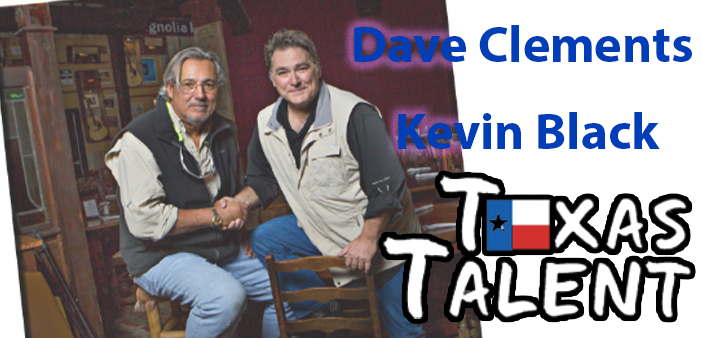


Before there was the city of San Angelo, there was Fort Concho. In fact, the city was initially called Santa Angela and sprang up across the Concho River in the shadow of the fort’s protection. During its 22-year existence as a U.S. military post, Fort Concho served a pivotal role to protect frontier settlers, stagecoaches, wagon trains, the U.S. mail, and to maintain trade routes. In addition, the soldiers who called the fort home scouted and mapped the area, conducted campaigns against hostile Indians, and suppressed illegal profiteering between Mexican and American traders known as Comancheros.
Today, as an offspring cares for an aging parent, the City of San Angelo owns and maintains 23 original and restored structures on the fort grounds. Fort Concho is a National Historic Landmark and one of the best-preserved frontier forts west of the Mississippi.


Construction
The fort was established in 1867 with five companies of the Fourth Cavalry and named for the nearby Concho River. The strategic site was chosen because of its proximity to five major trails, (including the Goodnight, Butterfield, and San Antonio Road) as well as the convergence of the North Concho, Middle Concho, and South Concho Rivers.
After unsuccessful construction efforts involving pecan wood and Adobe bricks, private German contractors from Fredericksburg were recruited. The masons used limestone quarried nearby and anchored the construction with pecan wood.
By 1879, Fort Concho was an eight-company post with some forty permanent structures around a parade ground that measured about 500 by 1,000 feet. The fort’s stone buildings included officer quarters and barracks, headquarters, commissary, quartermaster building, stables, blacksmith and carpenter shops, a forage house, an ordnance storehouse, a guardhouse, a powder magazine, a pump house, a bakery, a hospital, and a schoolhouse that was used also as a chapel. A number of temporary frame buildings—married soldiers’ quarters, telegraph office, and post trader’s store—were built adjacent to the fort. The fort was not stockaded, but stone walls surrounded the hospital and the backyards of the officers’ quarters. A belvedere on the post hospital afforded a distant view in every direction.

Active Service
Fort Concho served as regimental headquarters for some of the most famous frontier units like the 4th and 10th Cavalry. Notable military commanders such as Ranald Mackenzie, Benjamin Grierson, and William ‘Pecos Bill’ Shafter commanded here. Elements of all four regiments of the Buffalo Soldiers were stationed at the post during its active period. At full strength, Fort Concho supported 400-500 men made up of companies of infantry and troops of cavalry, staff officers, and support personnel. Soldiers from Fort Concho scouted and mapped large portions of West Texas; built roads and telegraph lines; escorted stagecoaches, cattle drives, and railroad survey parties; and served generally as a police force.
Fort Concho soldiers furnished personnel and supplies for three major Indian campaigns: Mackenzie’s 1872 campaign, the 1874 Red River War, and the Victorio campaign of 1879-1880.

Mackenzie is perhaps the most well-known of the fort’s commanders and is said to have continued his influence over the fort even from beyond the grave. In 1872, “Mackenzie’s Raiders” attacked a large Comanche camp, killing warriors and taking 127 women and children prisoner. The prisoners were held at the fort through the winter before being sent to an Indian reservation near Fort Sill, Oklahoma. Mackenzie also led his raiders during the 1874 Battle of Palo Duro Canyon.
Grierson’s all black Buffalo soldiers, so named by the Indians because they had curly, kinky hair like bison, served at the post from 1875-1882. The Tenth Cavalry served notably, performing grueling scouting and mapping expeditions and campaigns against hostile Indians, often facing days without proper supplies or water on the high plains. Buffalo soldiers were instrumental in the defeat of Mescalero Apache Indians led by Chief Victorio in 1880. Grierson suffered a personal tragedy at the fort when his 12-year old daughter died of typhoid fever.

Five soldiers who served at Fort Concho earned the Medal of Honor, and monuments near the post headquarters recognize this accomplishment and memorialize these men.
By the late 19th century, the railroad arrived in West Texas, and the military protection became less necessary. In a nostalgic ceremony on June 20, 1889, a small remaining company of the 19th Infantry took down the American flag at evening retreat. The party left the next morning for San Antonio.
The Fort Today
The old frontier army post is now a historic preservation project and museum which is owned and operated by the City of San Angelo, Texas. Fort Concho cares for a vast collection of more than 20,000 historic objects and archaeological material to assist in telling the history of the fort.
Fort Concho is also involved extensively in education. From field trips and tours to summer events for kids, Fort Concho has been offering educational programs for students for over 40 years. The post contains a modern living stable which houses the fort’s mules and visiting horses for programs and reenactments, as well as a classroom for education programs.

Periodic living history events fill the fort with mounted cavalry and infantry units, Buffalo Soldiers, and women reenacting officers’ wives and laundresses. A tradition is the large “Christmas at Fort Concho” event in early December.
Perhaps the fort’s most impactful connection to students and education, however, is a more direct one. The fort shares a common border with Fort Concho Elementary School. In fact, the post hospital building is divided, with half designated and furnished as a period exhibit for the historic fort, and the other half serving as the elementary school’s library. On the day of our visit, it was lunchtime on a sunny day, and schoolchildren were eating their noon meal outside on the steps of the fort hospital. What a beautiful and moving sight embodying the circle of life!
The fort gave birth to the city…the city restored and cares for the fort…and Fort Concho continues to give legacy and learning to children for generations to come.
630 S. Oakes St.
San Angelo, Texas 76903
(325) 657-4444
fortconcho.com
facebook.com/fortconcho



